Welcome to our comprehensive guide on Successful Pig Farm Management and Operational Strategies. If you’re a pig farmer or aspiring to enter the industry, this blog provides valuable insights and practical tips to thrive in your venture. We understand that running a pig farm involves numerous challenges, from optimizing profitability to ensuring efficient operations.
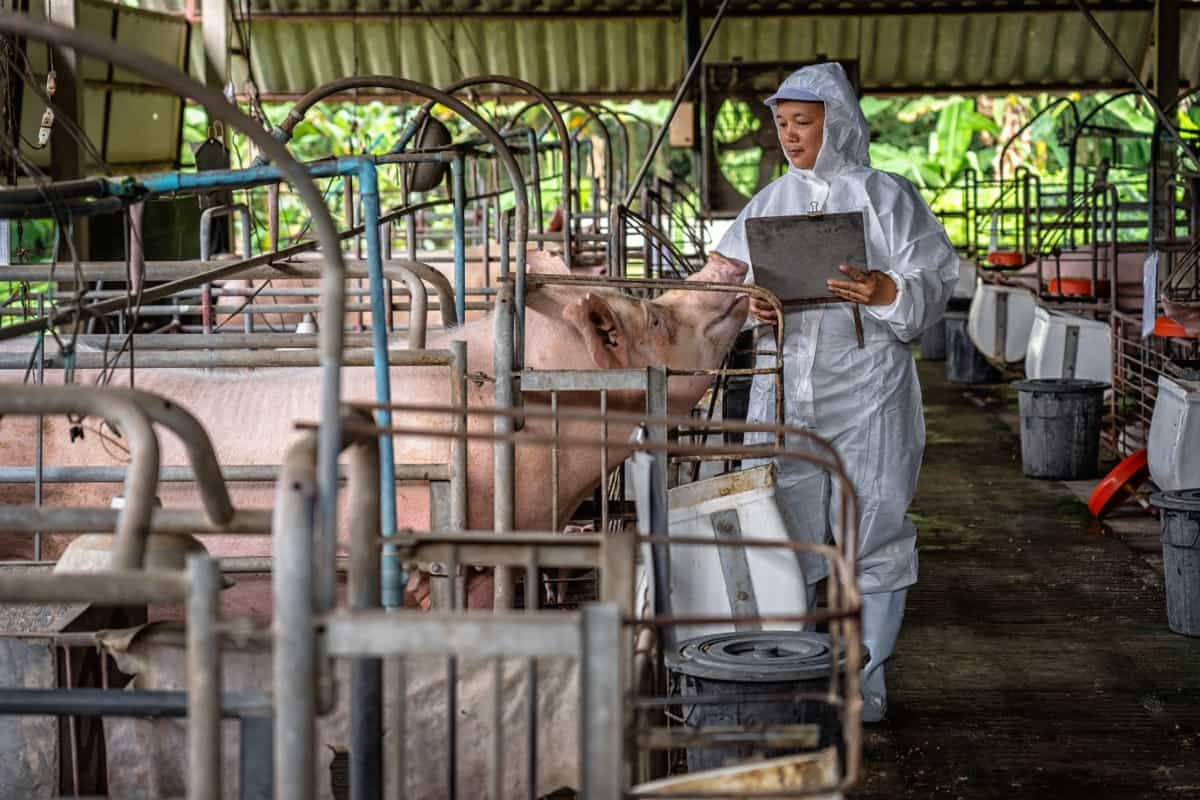
This easy-to-read guide will delve into the key factors contributing to success in pig farming, covering topics such as profitable techniques, effective management tips, and strategies for running a thriving pig farm.
What are Pig Farm Management and Operational Strategies?
Pig farm management and operational strategies refer to the techniques and approaches used to effectively run and optimize the productivity of a pig farming operation. These strategies encompass various practices, from selecting pig breeds and nutrition management to disease prevention and waste management. Accurate data and careful planning are crucial in making informed decisions for profitable pig farming.
For instance, understanding market demand and trends can help farmers determine the most profitable pig breeds to raise. Implementing efficient feeding programs and maintaining proper hygiene practices can contribute to the overall health and growth of the pigs. Additionally, incorporating advanced technologies and automation can streamline operations and improve efficiency.
What is Pig Farm Management Practice?
Pig management practices encompass a range of techniques and strategies implemented by pig farmers to ensure optimal performance and financial outcomes. Being proactive is key for professional pig farmers, as they must anticipate upcoming events on the farm and devise effective strategies to address them. These events may include mating, heat cycles, feed changes, farrowing, weaning, vaccinations, etc.
These practices are crucial for maintaining the pigs’ health and well-being and ensuring the farming operation’s overall success. By diligently implementing proper pig management practices, farmers can maximize productivity, minimize risks, and ultimately achieve their desired results in pig farming.
Profitable Pig Farming Techniques and Technologies
Modern advancements in pig farming offer solutions to simplify the process. These technologies and techniques have immense potential in the 21st century to enhance quality and efficiency on pig farms. Let’s explore some of these innovations.
Automated Individual Feedings: Feeding pigs the right amount of food at the appropriate times is crucial for optimal results. Automated individual feedings consider the pigs’ weight and monitor it over time, facilitating better management in large pen gestation and ensuring optimal reproductive performance.
Temperature and Environment Control: Maintaining the right temperature is vital, especially for juvenile pigs. Technological advancements enable precise control of environmental conditions to ensure pigs grow healthily. Special attention is given to farrowing and nursery environments, providing warmth and comfort to support piglet growth.
Artificial Intelligence and Robots: Artificial intelligence and robots are revolutionizing pig farming. These systems utilize facial recognition and tracking to monitor pigs’ behavior, feeding patterns, and movement and prevent sow smothering. They also detect tail postures to prevent tail biting. Such technology helps detect issues early and reduces labor-intensive tasks.
Sensors Placed on the Pig: Sensors, similar to “Fitbits,” are attached to pigs, collecting real-time data on their health. These sensors can alert farmers of health concerns and monitor heat cycles, food and water intake, and other important metrics for productive and healthy farming. Fixed sensors can also track environmental conditions.
Pig Housing Systems: Well-designed housing systems are essential for raising healthy pigs. Modern pig housing systems provide indoor, temperature-controlled environments that prevent injuries, minimize predator threats and diseases, and maintain comfortable temperatures. Advances in flooring materials simplify cleaning, promoting a healthier environment. These modern pig farming technologies offer immense benefits for pig farmers. The choice of which technology to adopt depends on individual farm requirements and priorities.
In case you missed it: How to Build a Pig Pen for Backyard Farming: A Step-by-Step Guide
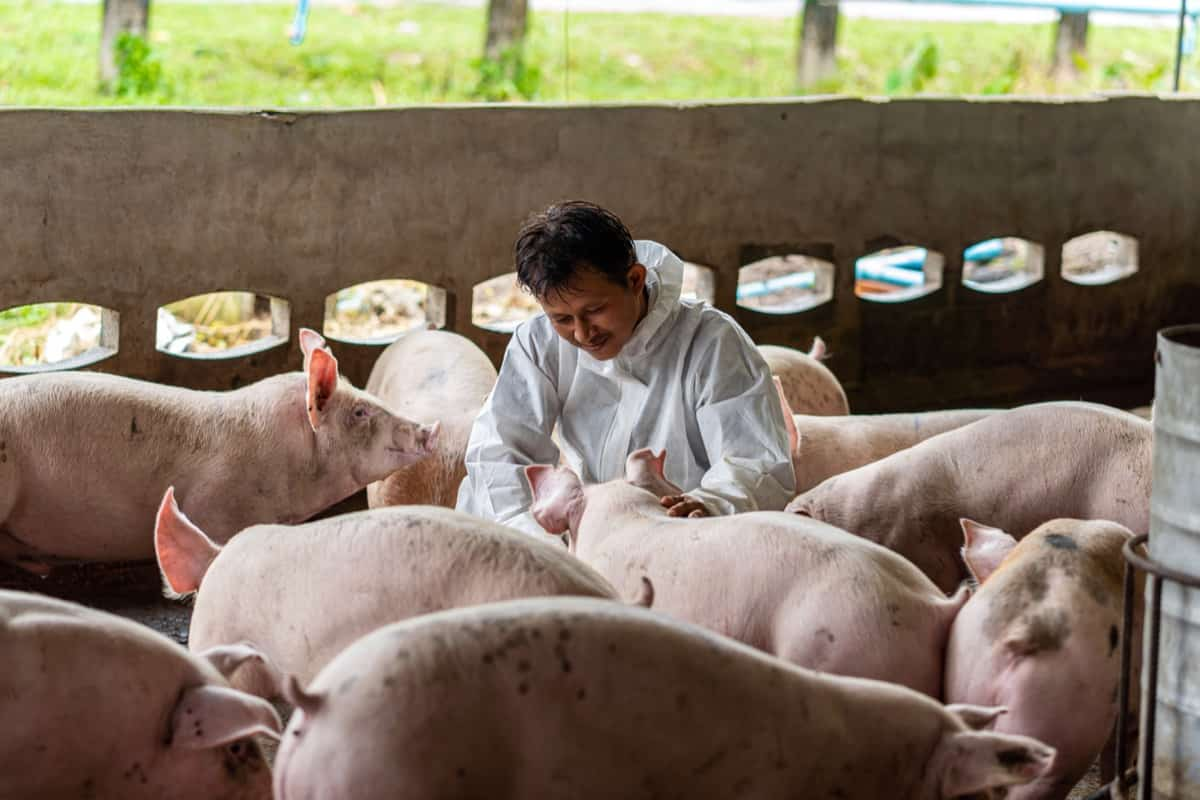
Effective Pig Farm Management Tips and Practice
Effective pig farm management practices are essential for ensuring the farming operation’s health, well-being, and success.
Feed Management Practices
- Feed cost constitutes about 70% of the total production cost in pig farming, as pigs heavily rely on their feeding routine for growth and development.
- Flushing: Increasing the feed ratio to sows and gilts before breeding to enhance litter size.
- Creep feeding: Providing young piglets separate creep feed to supplement their nutrition while still suckling.
- Feeding of pregnant sows: Adjusting nutrient intake during the later stages of pregnancy to meet the increased demands.
Environment and Temperature Management
- Regulating the temperature in pig pens to support optimal growth and development.
- Proper housing and management to prevent heat stress during high temperatures and overeating during cold temperatures.
- Effective waste disposal to maintain cleanliness and prevent disease transmission.
Breeding Management
- Selective breeding to improve genetics and desirable traits in the pig population.
- Monitoring heat cycles in sows and gilts for successful mating and conception.
- Tracking delivery dates of pregnant sows for proper preparation and care of piglets.
Health Management
- Implementing biosecurity measures to prevent disease spread within the farm.
- Vaccinations and parasite control prevent diseases and enhance herd health.
- Regularly monitoring pig health, prompt identification of signs of illness, and appropriate action.
Record Keeping
- Maintaining accurate records is crucial for monitoring farm performance and making informed decisions.
- Use management tools like Pigax to track and monitor crucial information such as heat cycles, pregnancy, farrowing, and feeding data.
- Benefits include historical details of pigs, tracking upcoming events, and monitoring feeding costs.
In case you missed it: Disease Prevention and Management in Commercial Pig Farms
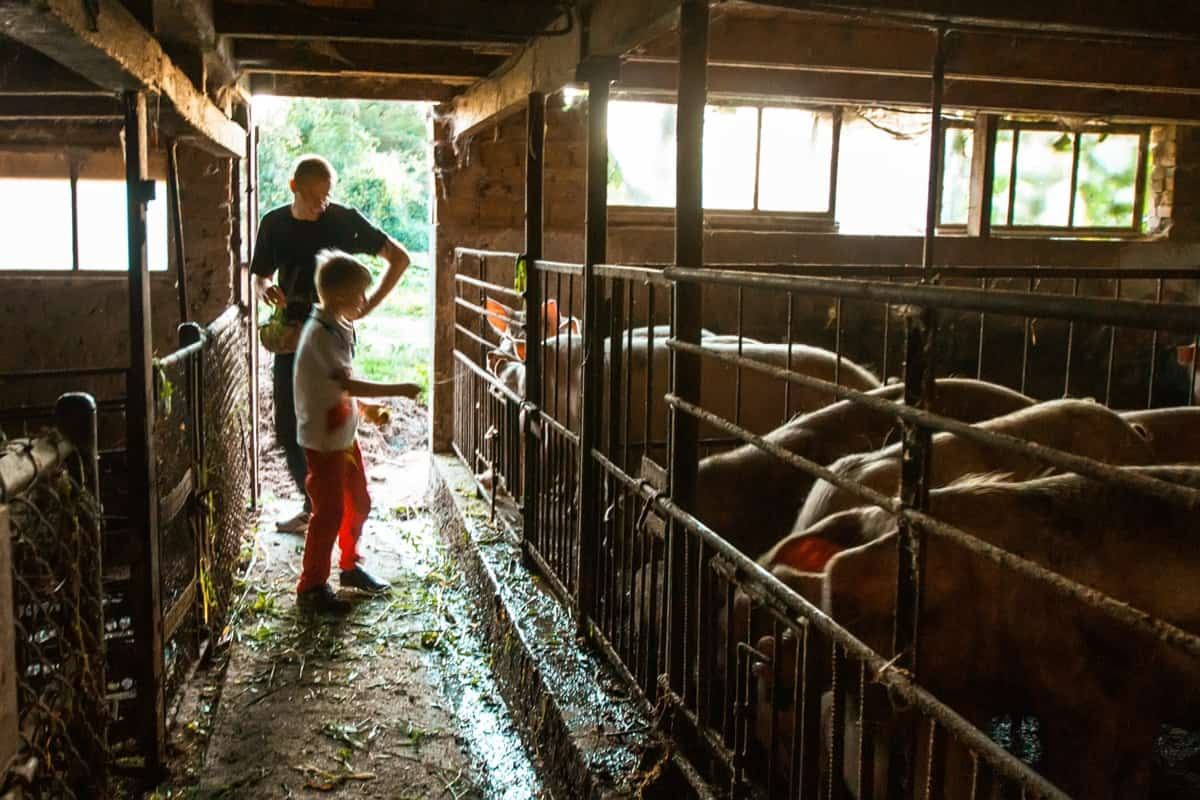
Optimal Pig Farm Operations for Success
- Build suitable housing and shelter for the pigs. The pens should protect them from predators and provide ample space for movement. Including a water pool area for the pigs to cool off is crucial for their health and well-being. Proper drainage systems are also necessary to prevent water stagnation and the spread of diseases.
- Purchase healthy piglets from reputable sources that have undergone vaccination processes. Starting with a small number of piglets and gradually expanding as you gain experience is recommended to minimize risks.
- Consult or hire a veterinary doctor to ensure the pigs’ health. Regular checkups, vaccinations, and proper feeding practices are vital for successful pig farming. Consider hiring a full-time veterinary doctor or scheduling regular visits from a vet.
- Hire workers or laborers, depending on the scale of your farm. They will assist with cleaning the shelter, feeding the pigs, and ensuring their safety. The number of workers required varies based on the size of the farm.
- Provide good-quality feed that meets the nutritional needs of the pigs. Proper nutrition is needed for their growth and development. Feeds should be rich in fiber, carbohydrates, vitamins, protein, and minerals.
- Ensure clean drinking water is readily available for the pigs. Use galvanized water troughs that are easy to clean and maintain. Regularly check and replace the water to keep it clean and fresh.
- It’s important to consider the costs of starting a pig farm business. Expenses include housing construction, purchasing piglets, veterinary services, labor, and high-quality feed.
Strategies for Running a Successful Pig Farm
- Efficient Management Practices: Implement sound practices to ensure optimal pig health and productivity. This includes proper feed management, regular health monitoring, and record-keeping to track performance.
- Biosecurity Measures: Establish strict biosecurity protocols to prevent the spread of diseases. This involves limiting farm access, disinfecting equipment, and separating sick pigs from healthy ones.
- Genetic Improvement: Use selective breeding techniques to improve the genetics of your pig population. This can lead to desirable traits such as faster growth, better feed efficiency, and high-quality meat.
- Proper Housing and Environment: Provide appropriate housing and maintain a comfortable environment for the pigs. Ensure good ventilation, temperature control, and waste management to minimize stress and enhance pig welfare.
- Marketing and Market Research: Identify your target market and develop effective marketing strategies. Conduct market research to understand customer needs, preferences, and trends.
- Continuous Learning: Stay updated with industry trends, new technologies, and best practices. Attend workshops, conferences, and professional networks to enhance your knowledge and skills.
- Financial Management: Maintain a strong financial management system to track expenses, revenues, and profitability. Develop a budget, monitor costs, and explore opportunities to improve efficiency and profitability.
In case you missed it: Pig Waste Management and Sustainable Manure Utilization
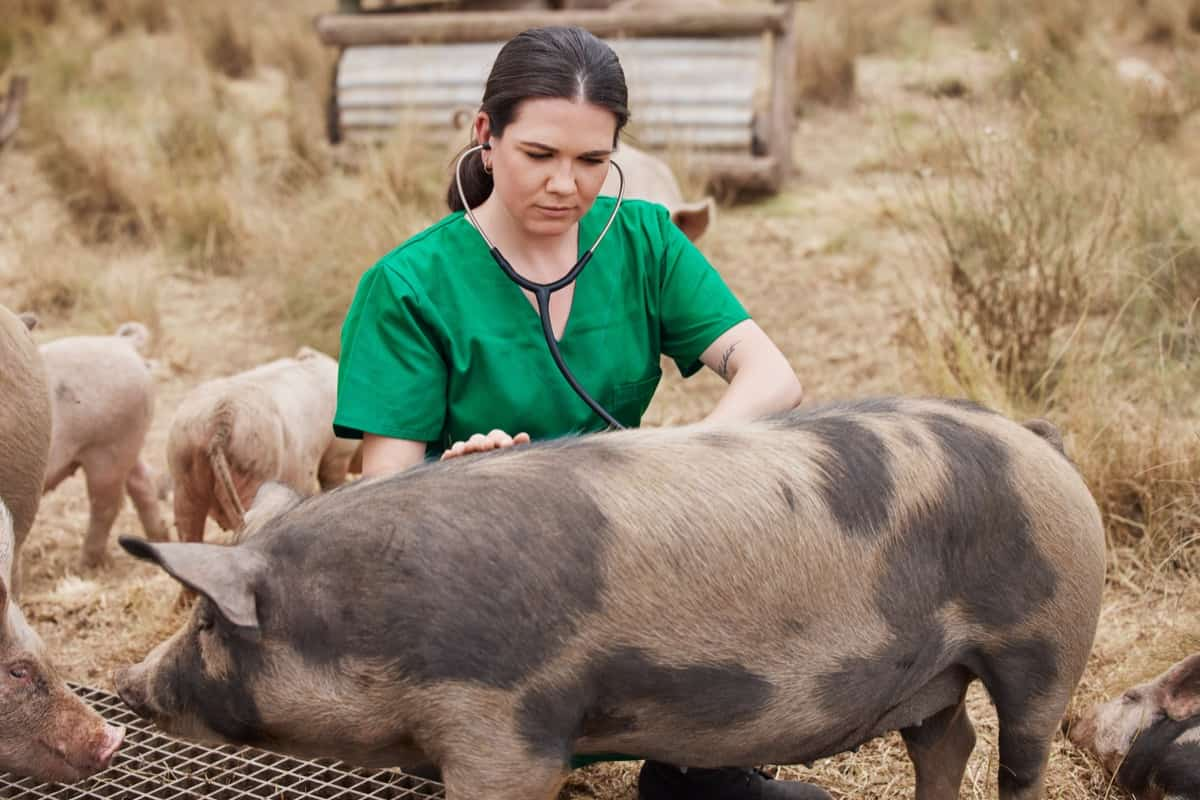
Key Factors in Managing a Profitable Pig Farm
- Breeding: Selecting healthy, high-quality breeding stock is crucial. Carefully choose sows and boars with desirable traits for improved productivity and market value.
- Nutrition: Providing a balanced diet is vital for pig growth and health. The feed should contain appropriate protein levels, carbohydrates, fats, vitamins, and minerals to meet nutritional requirements.
- Housing: Well-designed pig housing should prioritize adequate space, ventilation, and temperature control. Clean and comfortable environments help prevent disease and promote growth.
- Health Management: Regular veterinary checkups, vaccinations, and proper hygiene practices minimize the risk of disease outbreaks and maintain pig welfare.
- Biosecurity: Implement strict measures to prevent disease entry and spread. Controlled access, quarantine protocols, and disinfection procedures safeguard the herd.
- Record-keeping: Accurate and comprehensive records enable efficient monitoring of pig performance, financial analysis, and informed decision-making.
- Marketing and Sales: Developing strong marketing strategies and establishing relationships with buyers ensure profitable sales of pig products.
Best Practices for Pig Farm Operations
Farrowing Pens: Sows should be brought into the farrowing sections approximately five days before giving birth. Ensuring piglets receive enough colostrum, rich in antibodies, within 24 hours after birth is crucial for disease resistance and immune system development.
Weaning of Piglets: Weaning piglets from the sow at around 21 days of age requires careful attention. They experience a drop in maternal immunity, stress from a new environment, mixing with different litters, and transitioning from milk to feed. These factors increase the risk of diarrhea and other health issues.
Piglet Batteries/Nursery: Weaned piglets have low immunity, making them susceptible to infections. Minimize mixing piglets from different litters, maintain good hygiene, provide clean and disinfected stalls, strictly follow the all-in/all-out principle, and ensure appropriate temperature and lighting conditions.
Serving Pen: Ensure sows are in good condition upon arrival in the serving pens. Optimal ovulation and heat cycles are stimulated by providing ample light, service or lactation feed, teaser boar presence, and promoting a good standing reflex. Preferably, use artificial insemination for better efficiency, litters homogeneity, and reduced infection risk.
Gestation Pen: Move pregnant sows to the gestation pen no later than four weeks after insemination. Ensure daily feeding and water supply, minimize stress, monitor sow condition, and be vigilant about miscarriages and estrus. Transfer sows to the cleaned and disinfected farrowing pens 3-5 days before the expected farrowing date.
Washing Sows: Before transferring sows to the farrowing pen, wash them with lukewarm water and apply disinfectant sow shampoo. Rinse and disinfect before entering the farrowing pen to reduce infection pressure and cross-contamination.
Gilt Rearing Pen: Separate housing for young breeding gilts is essential. Maintain proper building layout, climate, and space per animal. Conduct initial and final selections based on weight (25 kg and 100 kg) and consider vaccination if breeding on-site.
Growing-Finishing Pigs: House piglets in clean, dry, and warm buildings. Follow the all-in/all-out principle, provide initial lighting, and maintain the ideal temperature. Fully slatted floors are preferable to minimize disease spread.
Quarantine Pen: Keep all newly introduced animals in quarantine, separate from the rest of the farm, for at least four weeks. Adhere to the all-in/all-out principle, establish a care and checking program, and use separate clothing and shoes.
Proven Strategies for Sustainable Pig Farm Management
Pig farming is a unique and profitable method of meat production, particularly where commercial pig rearing has gained traction. If you’re interested in starting a pig farming business, several key factors must be considered. Breed selection is crucial in profitability, with popular breeds including Hampshire, Large White Yorkshire, Banmpudke, Chwanche, Hurra, Duroc, Wild boar, and Bandelpygme.
In case you missed it: How to Build a Low-cost Pig House: DIY Steps, Barn Design, Shed Requirements, and Cheap Ideas
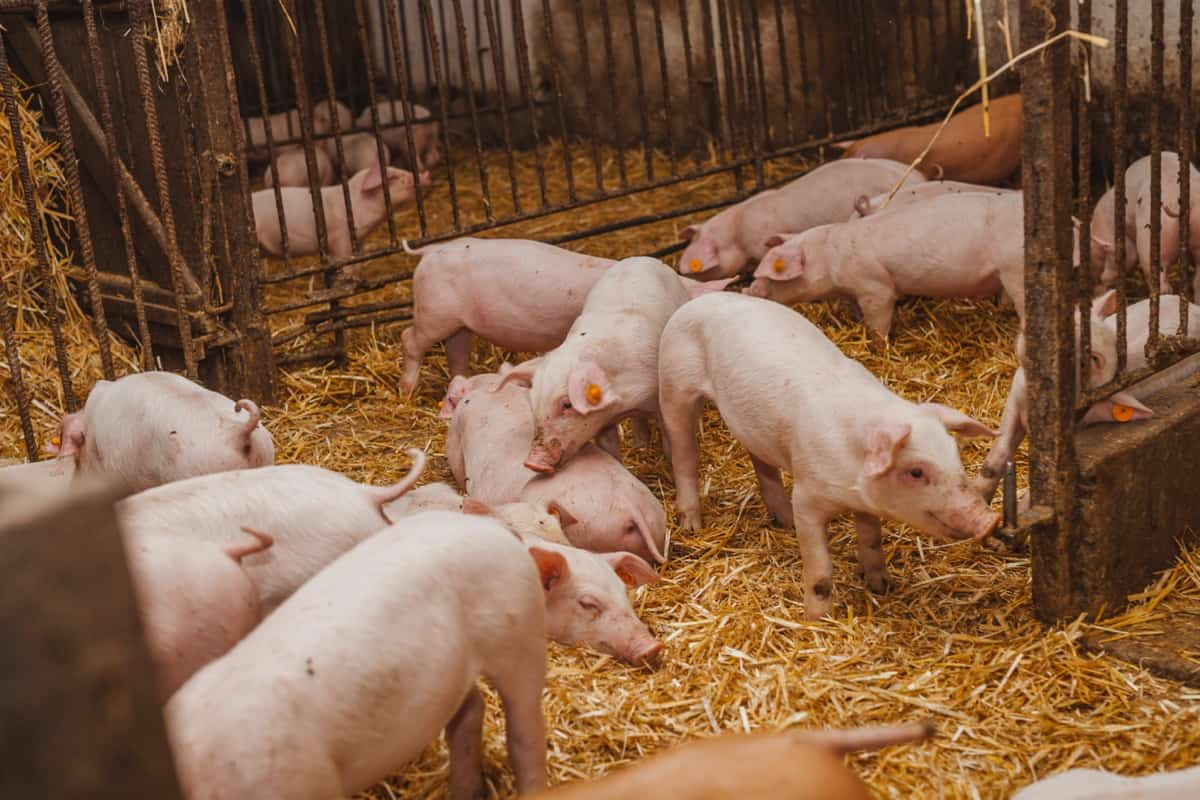
Conducting thorough market research, selecting suitable land, and ensuring reliable transportation and veterinary facilities are essential to setting up a successful pig farm. Effective pig feed management, housing with proper ventilation, disease prevention through vaccination and therapy, and skilled labor management are vital for optimal pig farming.
The marketing potential for pork is promising, with the option to sell locally or explore exporting opportunities. Regarding costs, pig feed, labor, water management, medicines, and vaccinations are key factors. Subsidies and loans, such as the government’s EDEG pig development scheme, provide eligible farmers with financial support.
Enhancing Productivity in Pig Farming Through Efficient Operations
Pig Breeds
Different pig breeds available in the region include non-descript, Hampshire, and their crossbreeds. Black skin pig breeds are preferable. Quality pigs should be procured from reputable research and developmental agencies, State Veterinary Department, NGOs, and other breeder farmers. Preferably, choose pigs that have acclimatized to the local area.
Breeding Management
Indigenous pigs are usually bred indiscriminately with little consideration. Reproduction is a key factor limiting productivity. Successful reproduction involves various closely linked events. Female pigs reach sexual maturity between 8-10 months, depending on breed and nutrition. The estrous cycle averages around 21 days (18-24 days).
Signs of heat include restlessness, loss of appetite, increased vocalization, frequent urination, red swollen vulva, and other behaviors. Breeding should be done during the third cycle of the gilt, considering its physical condition. The best time for artificial insemination (AI) of sows/gilts is 15-24 hours after the onset of estrus. Careful monitoring and veterinary assistance are essential for confirming pregnancy.
Care during Pregnancy and Farrowing
After breeding, pregnant sows should be kept in a clean, dry, and hygienic enclosure. Around three weeks before farrowing, they should be shifted to a clean farrowing house. Provide them with comfortable bedding material. Each pregnant animal should be fed individually. Usually, no assistance is required during farrowing. Piglets are active and should start suckling within minutes of birth. If necessary, help remove mucus from their noses and mouths. Weaker piglets should be assisted to reach the teat and consume colostrum. Take care to avoid crushing newborn piglets during and after farrowing.
Feeding Management
The feeding regime greatly influences pig growth and mortality. Pigs are efficient in converting feed to meat. Feed costs constitute 70-75% of the total production cost. While farmers may try to rear pigs with low-cost feed like kitchen waste and vegetable waste mixed with rice polish or wheat bran, it is important to provide a balanced feed containing all the necessary nutrients for growth and well-being.
Two methods are commonly practiced: concentrated feed computed with different ingredients and concentrated feed mixed with locally available agro-industrial by-products and crops. Proper feed formulas should be used based on the pig’s category and growth stage.
Housing
When selecting a site for a pig farm, consider proximity to the town/city for easy transportation and marketing facilities. Housing is essential to protect pigs from environmental factors. Pigsties can be constructed using locally available materials like wood, bamboo, and thatch grass or with brick walls, RCC posts, and corrugated roofing.
In case you missed it: Unlocking the Benefits of Guava Intercropping for Doubling Farmer’s Income
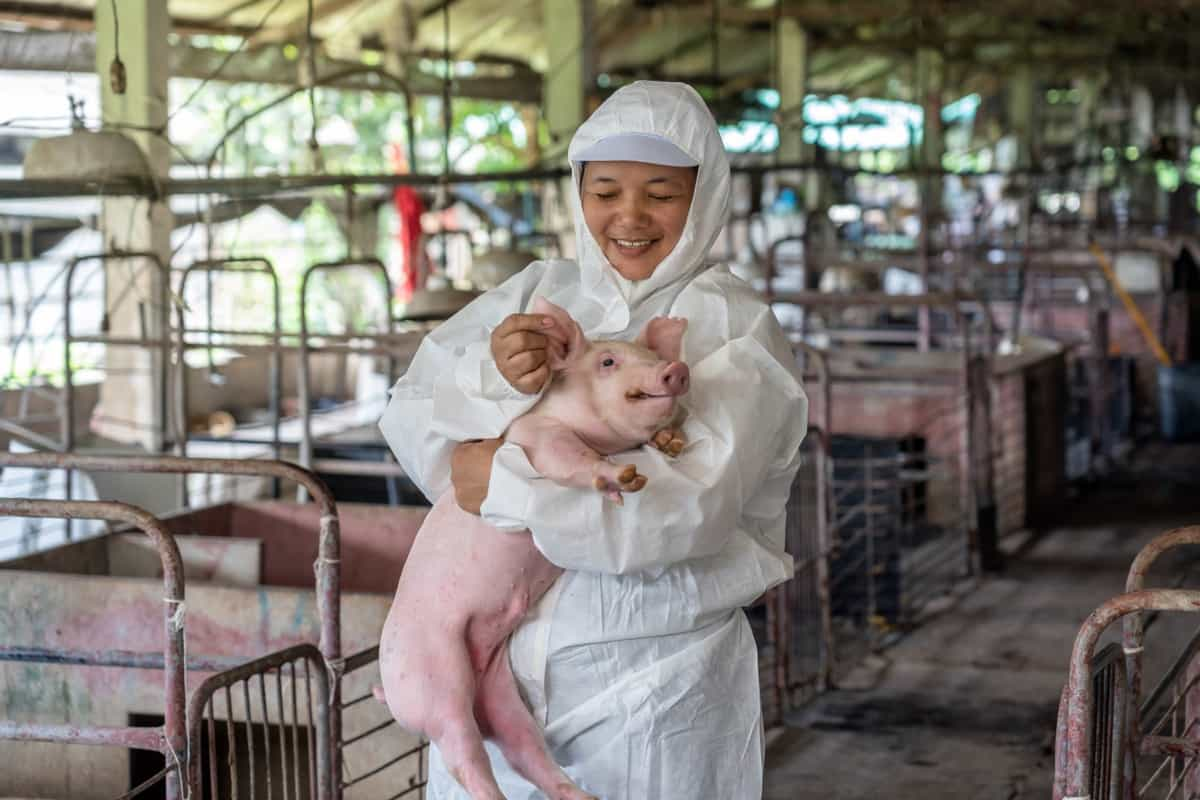
The floor should be cemented for easy cleaning. Different categories of pigs require specific floor space per pig, ensuring sufficient space for each animal. Proper ventilation, shade, and access to clean drinking water are crucial. Deep litter housing, filled with sawdust, is suitable for high rainfall and high-altitude areas.
Diseases and Health Care
Healthcare is vital for preventing losses in pig farming. Pigs can be infected with internal parasites, skin infections, and various bacterial and viral diseases. Proper care and treatment are necessary to ensure good growth and prevent mortality. Regular deworming and vaccination should be conducted. Common ailments include skin infections.
Conclusion
Successful pig farm management requires careful attention to breeding, pregnancy care, feeding, housing, and health management. By implementing efficient operational strategies and prioritizing the well-being of the pigs, farmers can enhance productivity and profitability in their pig farming endeavors.
- Types of Pesticides Used in Agriculture: A Beginner’s Guide
- Economical Aquaculture: A Guide to Low-Budget Fish Farming
- 15 Common Planting Errors That Can Doom Your Fruit Trees
- How to Make Houseplants Bushy: Effective Tips and Ideas
- Innovative Strategies for Boosting Coconut Pollination and Yield
- Pollination Strategies for Maximum Pumpkin Yield
- The Complete Guide to Chicken Fattening: Strategies for Maximum Growth
- Natural Solutions for Tulip Problems: 100% Effective Remedies for Leaf and Bulb-Related Issues
- Revolutionizing Citrus Preservation: Towards a Healthier, Greener Future
- Natural Solutions for Peony Leaf and Flower Problems: 100% Effective Remedies
- Maximizing Profits with Avocado Contract Farming in India: A Comprehensive Guide
- Natural Solutions for Hydrangea Problems: 100% Effective Remedies for Leaf and Flowers
- The Ultimate Guide to Choosing the Perfect Foliage Friend: Bringing Life Indoors
- From Sunlight to Sustainability: 15 Ways to Use Solar Technology in Agriculture
- The Ultimate Guide to Dong Tao Chicken: Exploring from History to Raising
- The Eco-Friendly Makeover: How to Convert Your Unused Swimming Pool into a Fish Pond
- Mastering the Art of Delaware Chicken Farming: Essentials for Healthy Backyard Flocks
- 20 Best Homemade Fertilizers for Money Plant: DIY Recipes and Application Methods
- How to Craft a Comprehensive Free-Range Chicken Farming Business Plan
- Brighten Your Flock: Raising Easter Egger Chickens for Beauty and Bounty
- How to Optimize Your Poultry Egg Farm Business Plan with These Strategies
- Subsidy for Spirulina Cultivation: How Indian Government Schemes Encouraging Spirulina Farmers
- Ultimate Guide to Raising Dominique Chickens: Breeding, Feeding, Egg-Production, and Care
- Mastering the Art of Raising Jersey Giant Chickens: Care, Feeding, and More
- Ultimate Guide to Raising Legbar Chickens: Breeding, Farming Practices, Diet, Egg-Production
- How to Raise Welsummer Chickens: A Comprehensive Guide for Beginners
- How to Protect Indoor Plants in Winter: A Comprehensive Guide
- Ultimate Guide to Grow Bag Gardening: Tips, Tricks, and Planting Ideas for Urban Gardeners
- Guide to Lotus Cultivation: How to Propagate, Plant, Grow, Care, Cost, and Profit
- Agriculture Drone Subsidy Scheme: Government Kisan Subsidy, License, and How to Apply Online
- Ultimate Guide to Raising Araucana Chickens: Breed Profile, Farming Economics, Diet, and Care
- Bringing Hydroponics to Classroom: Importance, Benefits of Learning for School Students
- Ultimate Guide to Raising Polish Chickens: Breed Profile, Farming Economics, Diet, and Care
- Ultimate Guide to Raising Australorp Chickens: Profile, Farming Economics, Egg Production, Diet, and Care
- Silkie Chicken Farming: Raising Practices, Varieties, Egg Production, Diet, and Care
- Sussex Chicken Farming: Raising Practices, Varieties, Egg Production, Diet and Care